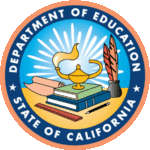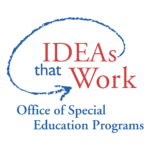This paper reports on a blended professional learning model of online and in-person meetings during which 40 teachers in 8 school districts in the US learned about the new brain science, challenging the “math person” myth, as well as effective mathematics teaching methods. The article refers to the combination as a Mathematical Mindset Approach. Using mixed methods, they conducted a one-year study to investigate teacher and student learning in a Mathematical Mindset network. They collected data on teacher and student beliefs, teacher instructional practice, and student learning gains on state achievement tests. The results from their quantitative analyses found statistically significant positive improvements in student beliefs, teacher’s instructional practice, and on students’ math test scores. The mindset approach particularly raised the achievement of girls, English learners, and economically disadvantaged students. Based on their qualitative analysis, they propose that the success of the intervention rests upon two central factors: (1) The different forms of PD served to eradicate the learning myths that had held up teachers and learners; and that (2) Teachers had space for identity work as mathematical learners.
Anderson, Robin Keturah, Boaler, Jo, and Dieckmann, Jack A. 2018. Achieving Elusive Teacher Change through Challenging Myths about Learning: A Blended Approach. Education Sciences 8(3), 98, pgs 1-33.
https://doi.org/10.3390/educsci8030098
WestEd offers services for educational agencies to purchase support with: Developing a cohesive and comprehensive understanding of a Multi-Tiered System of Supports that will improve instructional practice in both general education core and intervention classes to increase access to standards-aligned instruction and prepare students for college and career readiness.
WestEd, (2022).
This document highlights national data regarding the number of students with disabilities that are receiving a free and appropriate public education (FAPE). The data are disaggregated by gender, location of education, English language proficiency, type of disability, disciplinary removals, and by state.
Office of Special Education Programs. 2022. OSEP Fast Facts: Educational Environments of Children with Disabilities, Ages 5 (in kindergarten) through 21, Served under IDEA Part B https://sites.ed.gov/idea/osep-fast-facts-school-aged-children-5-21-served-under-idea-part-b-21/ (accessed September 16, 2022).
This fact sheet provides national data about demographics of English Learners (EL), including trend data and data disaggregated by disability, placement of EL students with disabilities, and high school completion.
Office of Special Education Programs. 2022. OSEP Fast Facts: Students With Disabilities Who Are English Learners (ELs) Served Under IDEA Part B
https://sites.ed.gov/idea/osep-fast-facts-students-with-disabilities-english-learners (accessed September 16, 2022).


